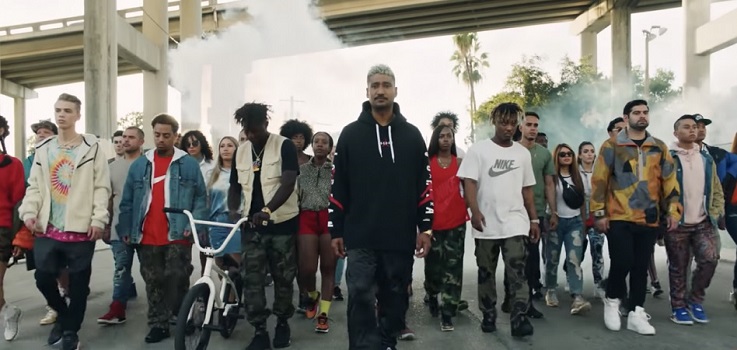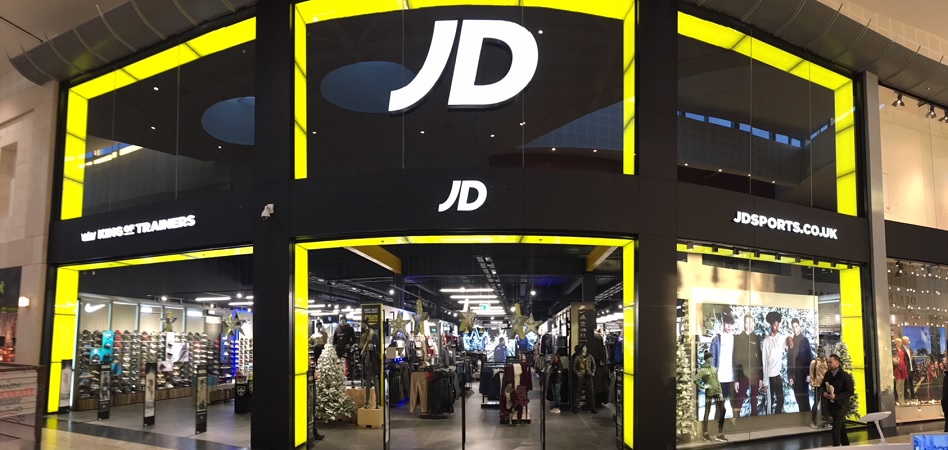JD Sports vs Foot Locker: Europe, fashion, and women to win the sneakers battle
The youngest British company, but the fastest. In only ten years, it went from only operating in the United Kingdom to conquering the continent and entering the United States.

A double-digit growth since 2010. The other barely surpasses the 4% every year. One un European, the other American. One has neared women and fashion and the other continues to be markedly masculine. Foot Locker plays in the biggest sports fashion market in the world but has lagged a newer, but faster player: JD Sports.
One of the factors that has slowed the development of Foot Locker is its dependence on its local market, the United States. The same country that has allowed it to reach size in recent years has become a drag on its growth: although the United States is the largest market for sports fashion, Europe is becoming the engine, and Foot Locker reacted late.
Sales of sports fashion in the United States have begun to slow down, after shooting 8.8% in 2018, according to Euromonitor data. In 2019, the sector in the country grew by 7%, to 127 billion dollars.
In contrast, in Western Europe they continue to increase their pace, going from a rise of 5.9% in 2018 to 7% in 2019. In Eastern Europe, growth is being much more moderate, from 4.7% in 2018 and 4.2% in 2019. In total, the turnover of the sector in 2019 stood at 74.9 billion dollars.
Foot Locker continues to generate 71.1% of its revenue in the US market, where it operates with 886 stores in its main chain, in addition to other concepts such as Champs Sports or Footaction.
Despite its international expansion in recent years, the company has maintained its dependence on the United States, where ten years ago it generated an even smaller share of 70.6%. In 2018, the company reach sales of 5.6 billion dollars in the country, up 2.1%, but grew only 1.9% abroad, up to 2.3 billion dollars.
Since 2014, the goal of expanding in Europe is repeated in each annual Foot Locker report. That same year, the company seized Runners Point Group, a chain with 193 stores in Germany and a strong digital business but did not finish to tip the scale.
In 2019, it attended the Sneakerness fair, the largest in Europe, and reorganized its global structure around three geographical divisions (Europe, Middle East and Africa, Asia Pacific and North America) to give more fuel to its international expansion.
On a global scale, the company grew by 3.3% in 2018, to 7.9 billion dollars, and raised its net profit by 1.9%, to 2.3 billion dollars.
In contrast, JD Sports, a much younger chain, has spent ten years selling only in the United Kingdom to become a European chain with a growing presence in Asia and the United States, which has managed to capitalize on the rise of athleisure and the growth of Fashion and women’s sports shoes.
While the origin of Foot Locker dates to 1879, JD Sports started in 1981 as a classic multi-brand sports store in Bury, just outside Manchester. After fifteen years of expansion in its local market, the company went to Pentland Group, which controls other brands such as Speedo and is the licensee of Lacoste for footwear.
Foot Locker generated 70% of its sales in its local market
In 2005, Pentland to JD Sports went public and began its European conquest with a blow of purchases: in 2009 it acquired the French Chausport; in 2010it bought the Spanish Sprinter and created a joint venture with the Portuguese Sport Zone, in 2014 it took over the German Isico Sports, and in 2016 it took control of the South Korean Hot-T.
The last leap forward came in 2018, when the group landed in the great sports fashion market, the United States, with the purchase of Finish Line and the opening of the first five JD Sports in the United States.
Currently, the group has 2,400 stores in 19 countries, of which 700 operate under the JD sports label. In addition, the company has diversified with the purchase of three outdoor fashion chains (Blacks, Millets and Go Outdoors) and has launched a gym chain.

In 2009, 97.9% of the sales of the group derived from the British market. Ten years later, that share has drop to 45% in 2019. The company experienced a double-digit increase in its sales every year in the last decade. Throughout the last year, the revenue of the group grew by 49%, to 4.7 billion pounds (6 billion dollars).
Another factor that has tipped the balance in factor of JD Sports, despite the fact women have led the growth of sports fashion in recent years Foot Locker continues to stick to have a markedly masculine model and aesthetic patterns that has not been able to connect with the new generations.
In its annual report, Footlocker detail that “a substantial portion of our sales with high margin is to young boys between 12 and 25 years.” In addition, the company explains that while the sales of men’s shoes grew, women’s sales dropped.
The company has not risen to the time of fashion: in its annual report, the company emphasizes that one of its ricks is changes in trends “especially given the long lead times we work with our supplier,” 66% of its offer comes from a single group: Nike
In parallel, JD Sports has opted for more modern and inclusive store concepts and has approached fashion with chains like Size, launched in 2000 which specialized in special collection and limited edition of footwear, clothing and accessories.


info@themds.com
Validation policy for comments:
MDS does not perform prior verification for the publication of comments. However, to prevent anonymous comments from affecting the rights of third parties without the ability to reply, all comments require a valid email address, which won’t be visible or shared.
Enter your name and email address to be able to comment on this news: once you click on the link you will find within your verification email, your comment will be published.